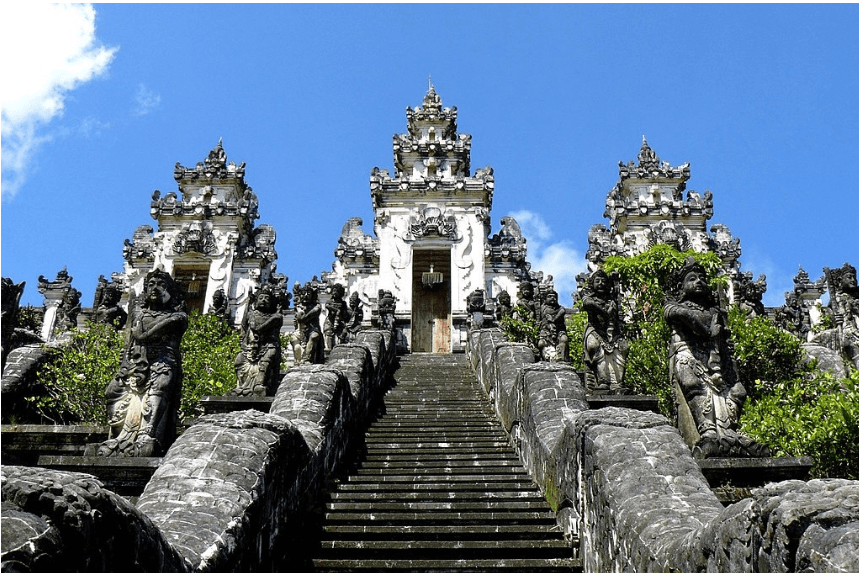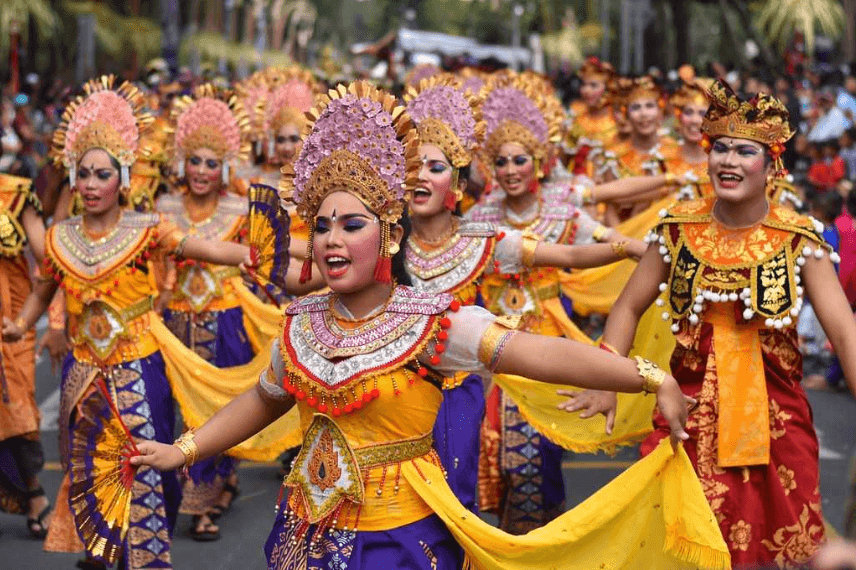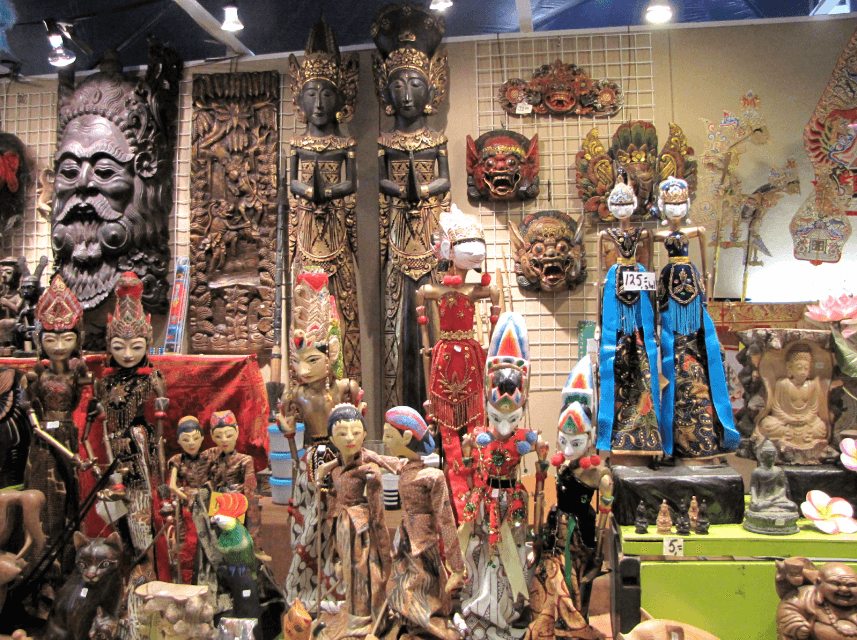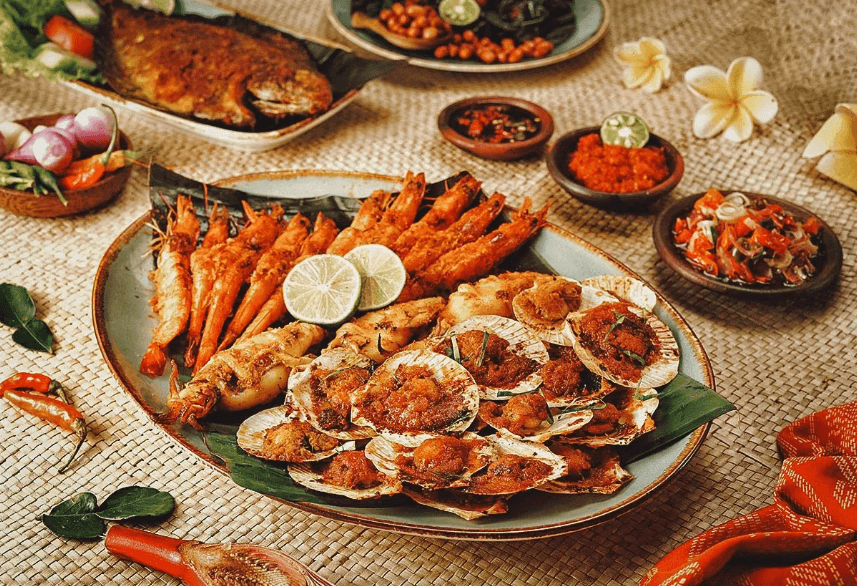Bali’s Cultural Heritage is a tapestry woven with the threads of exquisite temples, vibrant festivals, and cherished traditions. The significance of Bali’s Cultural Heritage echoes throughout history, underscoring the island’s deep-rooted cultural values. The Balinese temples stand as enduring symbols of spiritual devotion and architectural magnificence. Each temple tells a unique story, inviting visitors to delve into Bali’s Cultural heritage.
Bali trip packages are wholesome vacation packages offering the perfect mix of Bali’s Cultural Heritage, temples and festivals.
The island comes alive with the celebration of Balinese festivals, where the air is filled with music, dance, and the scent of incense. These festivities provide a captivating glimpse into Bali’s vibrant traditions and offer an immersive experience of its cultural tapestry. Discover the enchantment of Bali’s Cultural Heritage, where the past and present harmoniously blend to create a vibrant and culturally diverse destination.
You can also do some Thrilling Adventure Activities in Bali, which include white water rafting expedition down the Ayung River, or challenge the towering waves while surfing in Kuta or Uluwatu. Dive into the vibrant underwater world through scuba diving or snorkelling and witness Bali’s breathtaking marine life. Soar through the lush forests on a heart-pounding zip line adventure or explore hidden canyons while canyoning. For an adrenaline rush, try paragliding, skydiving, or taking on challenging ATV rides. Bali’s adventure offerings ensure an unforgettable experience for those seeking excitement and adventure.
Contents
Bali’s Cultural Heritage: Balinese Temples
Balinese temples, with their immense cultural and religious significance, stand out as prominent features of Bali’s landscape. Explore a few noteworthy Balinese temples that showcase the island’s rich heritage:
1. Pura Besakih
A Balinese temple Known as the “Mother Temple of Bali,” Pura Besakih is the largest and holiest Hindu temple on the island. Situated on the slopes of Mount Agung, it consists of a complex of 23 separate temples. Visitors can marvel at its stunning architecture, intricate stone carvings, and panoramic views of the surrounding landscapes.
2. Pura Ulun Danu Bratan
Positioned on the serene shores of Lake Bratan in Bedugul, this Balinese temple, Pura Ulun Danu Bratan, is dedicated to Dewi Danu, the water goddess. Balinese festivals are also celebrated in this temple. The distinctive feature is its setting amidst the lake, creating a picture-perfect reflection. The lush surroundings and misty mountains add to its ethereal charm.
3. Pura Luhur Uluwatu
Perched 70 meters above the Indian Ocean on a cliff, Pura Luhur Uluwatu is a spectacular temple renowned for its dramatic location. Dedicated to the spirits guarding Bali from evil, this Balinese temple provides mesmerising ocean views. At sunset, visitors can enjoy enchanting Kecak dance performances.
4. Pura Tirta Empul
Situated in the village of Tampaksiring, Pura Tirta Empul is renowned for its holy spring water. This Balinese Temple is for ritual purification and cleansing. People can witness the ritual bathing and explore the intricately decorated courtyards and pools within the temple complex.\
Bali’s Cultural Heritage: Balinese Festivals and Celebrations
Bali is known for its vibrant and colourful festivals that showcase the island’s cultural and religious traditions. Some prominent festivals include:
1. Galungan and Kuningan
In Bali’s Cultural Heritage, this Balinese festival is Celebrated every 210 days. Galungan marks the triumph of good over evil, while Kuningan signifies the end of the festivities. Temples are decorated, and families engage in prayers and ceremonies.
2. Nyepi- The Balinese Festival
Known as the “Day of Silence,” Nyepi is a unique festival where the Balinese festivals come to a complete standstill. The island observes a day of silence, fasting, and introspection.
3. Ogoh-Ogoh Parades
Held on the eve of Nyepi, these Balinese festivals, and parades feature giant, intricately crafted statues depicting mythical creatures and demons. It is a lively and vibrant event filled with music and dance.
Traditional Arts and Crafts
Bali’s cultural heritage is reflected in its traditional arts and crafts, deeply ingrained in the local culture. Some notable art forms and skills include
1. Balinese Dance
Bali is renowned for its captivating traditional dances, such as the Barong, Legong, and Kecak. These performances portray mythological stories and showcase intricate costumes and expressive movements.
2. Batik and Weaving
Balinese batik fabrics and woven textiles are highly prized. Visit local workshops to witness the meticulous process of batik-making and learn about traditional weaving techniques.
3. Woodcarving and Painting
In Bali’s Cultural Heritage, skilled artisans produce exquisite woodcarvings and paintings, often depicting religious or mythological themes. Explore art villages like Mas and Ubud to witness the craftsmanship firsthand.
Bali’s Cultural Heritage: Balinese Food
Bali’s culinary heritage is a testament to its cultural diversity. Sample conventional Balinese dishes, such as Babi Guling (spit-roasted pig), Lawar (mixed vegetables and meat), and Sate Lilit (minced meat satay). Don’t forget to savour local delicacies like the famous Balinese coffee and traditional snacks such as Pisang Goreng (fried bananas) and Klepon (sweet rice cakes).
Bali’s cultural heritage is deeply rooted in its temples, festivals, and traditional practices, offering visitors a captivating glimpse into the island’s vibrant culture and spirituality.







